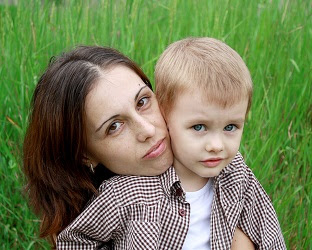Proper Children Development with Favorite Kids Books
 One great activity with a 3-year old kid is to read his/her favorite kids books. They have already been through the stage of reading books, learning one or more sentences and have advanced to proper storytelling. This therefore entails that you can now select books you and your kid will enjoy without bothering to read them over and over again.
One great activity with a 3-year old kid is to read his/her favorite kids books. They have already been through the stage of reading books, learning one or more sentences and have advanced to proper storytelling. This therefore entails that you can now select books you and your kid will enjoy without bothering to read them over and over again.
At this age, books for three year olds as well as books for four year olds open up a new world. It is nice to read books about different subjects, places, animals, or even interests. These books are a good way to communicate with young children. It allows you to talk about the story as well as the emotions and feelings it invoked.
In fact, books are very helpful in explaining various situations. They are useful in widening the vocabulary. According to studies, children who are read to in their homes at an early age have a better start when sent to school. Most importantly, reading implicates that parents, caregivers, and grandparents can have a seat with a child and have fun to spend quality time together.
It is significant to make the most of this particular age because it is the period in which young children are speculative, curious, and open to reading and learning new ideas. You should borrow or purchase many top kids’ books and enjoy reading with your 3-year old. Avoid the boredom of reading the same stories repeatedly.
To get you started, I have provided here some recommendations of what I believe to be the best book for kids three years of age. Look for available books that you and your three-year-old will both enjoy.
Correlation of the Text and the Image
This year, one of the most significant concepts your child will learn about reading is that, when reading a book, it is the printed words and not the pictures on the page which are read. Make this association stronger by way of pointing and running your fingers below the words that you are reciting.
This also illustrates that the words are written from the left to the right. If you want to take a step further, you can point to single words and indicate the spaces separating them. A book by P.D. Eastman entitled Put Me in the Zoo is one of the great books for kids and a very good choice to help children of this age master the skill of recognizing words, since the word zoo has been illustrated creatively on almost every page.
Play a game out of it by challenging your kid to pinpoint the word art on every page, and after which, have him find the word’s text version as well.
Concepts of Letters
At this age, three-year-olds become more and more interested in the manner or means of the formation of letters into words. This concept can be strengthened even when favorite kids books are not read.
It can be done during conversations when familiar words come up such as hat, sit, cat and dog, then verbally spell them out or write on a piece of paper. This is helpful in reinforcing the concept of printed letters as representations of spoken words, an early vital literacylesson.
The Next Big Thing
Aside from their ability to share what’s on their minds about things going on in a book, preschoolers also start developing their skill of making predictions grounded on past events. Perfect this ability reading popular kids’ books and pausing oftentimes at short intervals during a story and ask your kid of his opinion on what is going to happen next.
Role Playing
For most preschoolers, role playing and pretending are very essential activities. This can be applied to reading favorite kids books by making your story time a kind of theatric performance. You can engage yourself and your child to enact some part in the story, using different speech patterns and mannerisms for every character. Through this, your child will be kept absorbed in the story, and more importantly, it will make him enjoy more and help him improve his imagination.
Completing the Sentence
Participation is one of the activities preschoolers thrive for, whether in building columns of blocks or reading favorite kids books. Inspire your child to be active in the books you read by pausing frequently and letting him complete the sentence by giving the next word. If the books are familiar, you may also ask him tell once again the rest of the story.
